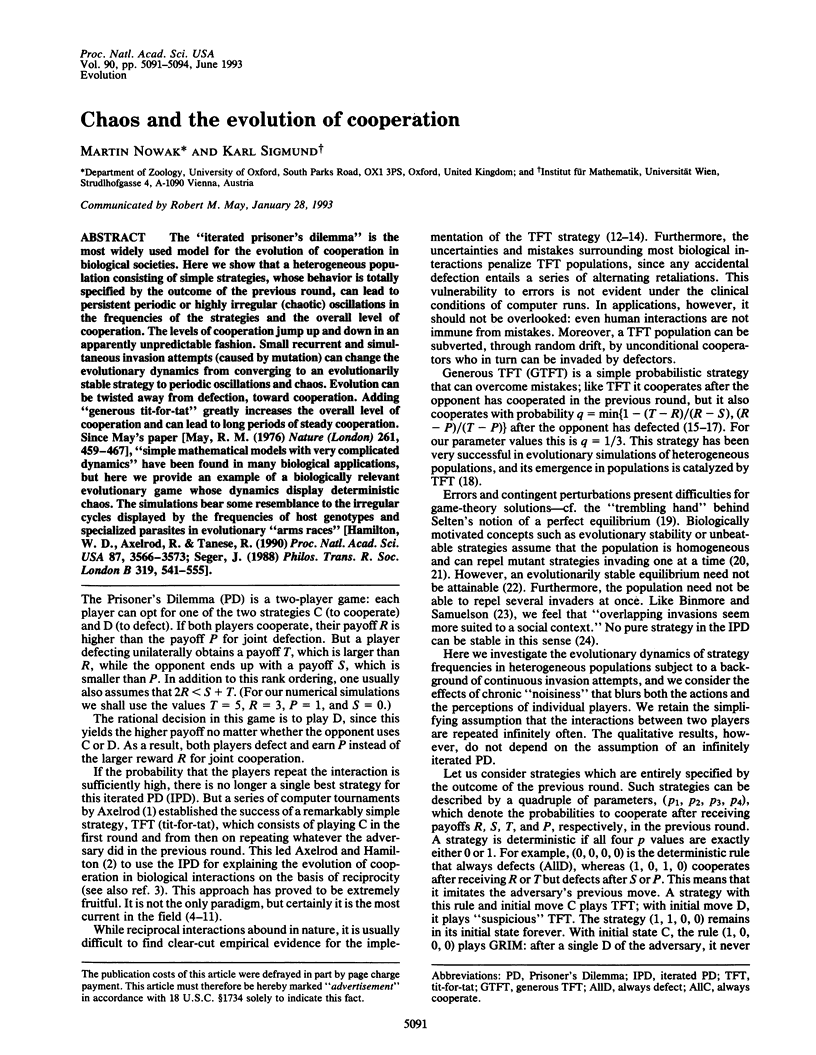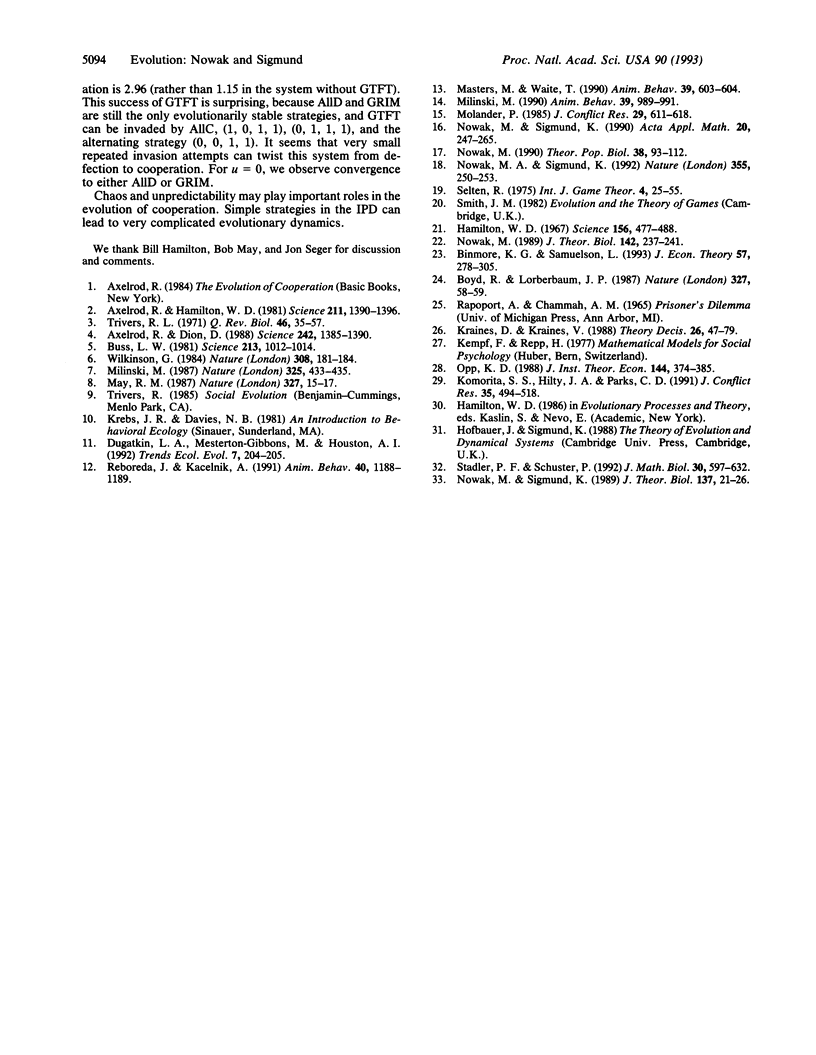Abstract
The "iterated prisoner's dilemma" is the most widely used model for the evolution of cooperation in biological societies. Here we show that a heterogeneous population consisting of simple strategies, whose behavior is totally specified by the outcome of the previous round, can lead to persistent periodic or highly irregular (chaotic) oscillations in the frequencies of the strategies and the overall level of cooperation. The levels of cooperation jump up and down in an apparently unpredictable fashion. Small recurrent and simultaneous invasion attempts (caused by mutation) can change the evolutionary dynamics from converging to an evolutionarily stable strategy to periodic oscillations and chaos. Evolution can be twisted away from defection, toward cooperation. Adding "generous tit-for-tat" greatly increases the overall level of cooperation and can lead to long periods of steady cooperation. Since May's paper [May, R. M. (1976) Nature (London) 261, 459-467], "simple mathematical models with very complicated dynamics" have been found in many biological applications, but here we provide an example of a biologically relevant evolutionary game whose dynamics display deterministic chaos. The simulations bear some resemblance to the irregular cycles displayed by the frequencies of host genotypes and specialized parasites in evolutionary "arms races" [Hamilton, W. D., Axelrod, R. & Tanese, R. (1990) Proc. Natl. Acad. Sci. USA 87, 3566-3573; Seger, J. (1988) Philos. Trans. R. Soc. London B 319, 541-555].
Full text
PDF



Selected References
These references are in PubMed. This may not be the complete list of references from this article.
- Axelrod R., Dion D. The further evolution of cooperation. Science. 1988 Dec 9;242(4884):1385–1390. doi: 10.1126/science.242.4884.1385. [DOI] [PubMed] [Google Scholar]
- Axelrod R., Hamilton W. D. The evolution of cooperation. Science. 1981 Mar 27;211(4489):1390–1396. doi: 10.1126/science.7466396. [DOI] [PubMed] [Google Scholar]
- Buss L. W. Group living, competition, and the evolution of cooperation in a sessile invertebrate. Science. 1981 Aug 28;213(4511):1012–1014. doi: 10.1126/science.213.4511.1012. [DOI] [PubMed] [Google Scholar]
- Hamilton W. D. Extraordinary sex ratios. A sex-ratio theory for sex linkage and inbreeding has new implications in cytogenetics and entomology. Science. 1967 Apr 28;156(3774):477–488. doi: 10.1126/science.156.3774.477. [DOI] [PubMed] [Google Scholar]
- Milinski M. TIT FOR TAT in sticklebacks and the evolution of cooperation. 1987 Jan 29-Feb 4Nature. 325(6103):433–435. doi: 10.1038/325433a0. [DOI] [PubMed] [Google Scholar]
- Nowak M. An evolutionarily stable strategy may be inaccessible. J Theor Biol. 1990 Jan 23;142(2):237–241. doi: 10.1016/s0022-5193(05)80224-3. [DOI] [PubMed] [Google Scholar]
- Nowak M., Sigmund K. Oscillations in the evolution of reciprocity. J Theor Biol. 1989 Mar 7;137(1):21–26. doi: 10.1016/s0022-5193(89)80146-8. [DOI] [PubMed] [Google Scholar]
- Stadler P. F., Schuster P. Mutation in autocatalytic reaction networks. An analysis based on perturbation theory. J Math Biol. 1992;30(6):597–631. doi: 10.1007/BF00948894. [DOI] [PubMed] [Google Scholar]


